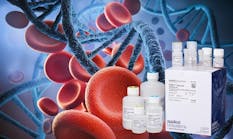We asked Michael Apostolis, MD
As a pulmonologist, why do you order liquid biopsies?
Dr. Apostolis: Liquid biopsy, in conjunction with tissue biopsy, provides further information on genetic mutations. Many lung cancers have genetic mutations that can be targeted with chemotherapy; therefore, it’s very helpful to have a liquid biopsy to confirm the tissue analysis and inform personalized treatment.
In other cases, liquid biopsy is the only mode of getting the cells needed for a genetic diagnosis. For example, a pulmonary adenocarcinoma may not yield enough tissue for genomic analysis. To immediately re-biopsy is a difficult option. Repeated invasive procedures have increased risk, as opposed to a simple blood test. But liquid biopsy provides an alternative modality—usually a blood draw, though tests that use urine or other bodily fluids do exist—to collect molecular data from circulating nucleic acids, circulating tumor cells, or other biomarkers.
This is such an important tool in lung cancer diagnosis because bronchial aspiration and gestational bronchoscopy are very technical procedures that only give us limited access to tumor tissue. Capturing enough cells for genetic analysis is far from guaranteed. Furthermore, that tissue is a narrow view of the whole tumor’s makeup, so the confirmatory use of liquid biopsy guards against false negatives.
Some forms of liquid biopsy can also give us information on whether or not a good response to chemotherapy is to be expected. Blood-based proteomic tests, for example, provide physicians tools to provide personalized counseling to families and help anticipate treatment complications.
There are several tests on the market now. To what factors do you give the most weight when deciding which test to order?
Dr. Apostolis: A robust test will have been validated to show strong correlation with other modalities, especially tissue testing. Because liquid biopsy is frequently ordered to complement tissue testing, there must be a high level of confidence that the two data sets can be compared in a meaningful way.
Close behind that, a fast turnaround time is very significant. Once we draw a blood sample, everyone involved rightly wants to get the results and start acting on them. As a critical care pulmonologist, I want to coordinate a treatment plan quickly with the pathologist and oncologist and communicate this to the patient. With a fast test, the patient feels at ease, tumor boards operate efficiently, and I can respond quickly if I need to modify treatment.
You might think fast turnaround time would come at the expense of sensitivity, but that’s not necessarily true. The test I use most in my practice has a sensitivity at or above 90 percent, compared with tissue biopsy, and still returns results within 72 hours.
Physicians should also learn about some of the many testing platforms. PCR, for example, has been validated across multiple scientific fields and has become the standard for genetic molecular testing. Now, it’s being used in medicine. Droplet digital PCR is an advancement that increases PCR sensitivity by dividing a sample into thousands of separate micro-reactions. Different platforms bring unique strengths and merits that should be considered with the needs of the situation.
What future improvements are you looking forward to? Would you like to see liquid biopsy replace tissue biopsy?
Dr. Apostolis: The next step will be expanding the portfolio of test targets. Right now, for example, there isn’t a cell-free DNA test for PD-L1, though a few have been developed to measure PD-L1 on circulating tumor cells. The technical performance of many liquid biopsy tests is already solid, and we can expect to see steady improvements.
On a practical level, it would be astronomical if we can get to the point of using a finger stick of blood instead of a vial. As to whether a blood test will ever replace tissue biopsy, I don’t see that happening any time soon because the two modalities support one another so closely. But there is potential, so we’ll have to wait and see.
Michael Apostolis, MD, is an associate clinical professor at Northeast Ohio Medical University. He also practices pulmonary and critical care medicine at a private practice in Youngstown, OH.






